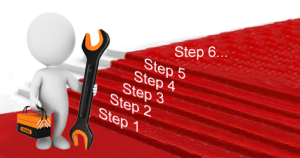 Creating a Proactive Service® culture throughout your service team is one of the most effective ways that a service company can grow their business and create a distinctive competitive advantage. By Proactive Service®, we mean a technical service team that is engaged not only in maintaining and fixing equipment to the highest levels, but in actively looking for ways that their firms can help their customer meet their own business goals. It is proactive because the technician takes the initiative to identify opportunities to help and proactively addresses these with the customer. Read more
Creating a Proactive Service® culture throughout your service team is one of the most effective ways that a service company can grow their business and create a distinctive competitive advantage. By Proactive Service®, we mean a technical service team that is engaged not only in maintaining and fixing equipment to the highest levels, but in actively looking for ways that their firms can help their customer meet their own business goals. It is proactive because the technician takes the initiative to identify opportunities to help and proactively addresses these with the customer. Read more
 Think that your employees are empowered to deliver an exceptional customer experience? Don’t bank on it. Your policies may be letting you down. I learned this lesson recently during a trip to a bank. It was a Saturday afternoon and I was off to the UK on business on an early morning flight on Monday. To my dismay, I realized that I did not have any British currency. No problem, I reasoned, I just need to go to the bank.
Think that your employees are empowered to deliver an exceptional customer experience? Don’t bank on it. Your policies may be letting you down. I learned this lesson recently during a trip to a bank. It was a Saturday afternoon and I was off to the UK on business on an early morning flight on Monday. To my dismay, I realized that I did not have any British currency. No problem, I reasoned, I just need to go to the bank.
As it turned out, my branch was closed by the time I arrived. Fortunately, another bank on the other side of the plaza was open. By coincidence, I used to have all of my accounts with the open bank until about three years ago and I still had a Visa card with their name on it.
I waited my turn for the lone teller. When I got to the wicket, I explained that I would like to purchase some pounds sterling.
“Certainly sir, how much would you like?” came the very pleasant reply.
“£200 should do it, thanks.”
“No problem, just put your bank card in the slot.” she directed.
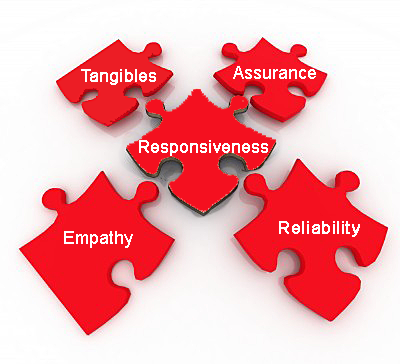 In this blog, we will consider what we can do to transform the service experience by demonstrating our responsiveness. Responsiveness shows our competence and this creates Assurance. Responsiveness shows that we are Reliable and demonstrates that we have Empathy for our customers.
In this blog, we will consider what we can do to transform the service experience by demonstrating our responsiveness. Responsiveness shows our competence and this creates Assurance. Responsiveness shows that we are Reliable and demonstrates that we have Empathy for our customers.
Recall that the name RATER[1] is an acronym with each letter representing the first letter of one of the five key dimensions of service quality. They are:
R eliability: Our ability to provide what is promised, dependably and accurately
A ssurance: Our knowledge and courtesy, and our ability to convey trust and confidence
T angibles: Our physical facilities and equipment, and our appearance
E mpathy: The degree of caring and individual attention we provide to customers
Responsiveness: Our willingness to help customers and provide prompt service
To demonstrate responsiveness, consider what your team can do to demonstrate responsiveness through every customer touch point. For example, does everyone on your team know that responsiveness means being accessible? Do they understand the importance of getting back to the customer in a reasonable amount of time? Are they aware of what accounts for “reasonable” when getting back to customers, colleagues and suppliers?
 In my last post on the five key dimensions of service quality, we considered what we can do to transform the service experience through the tangible aspects of the service we provide. Here we consider what we can do to transform the service experience by clearly communicating to our customers that we care about them. Our customers will have little regard for us until they know that we have empathy.
In my last post on the five key dimensions of service quality, we considered what we can do to transform the service experience through the tangible aspects of the service we provide. Here we consider what we can do to transform the service experience by clearly communicating to our customers that we care about them. Our customers will have little regard for us until they know that we have empathy.
Recall that the name RATER is an acronym with each letter representing the first letter of one of the five key dimensions of service quality. They are:
R eliability: Our ability to provide what is promised, dependably and accurately
A ssurance: Our knowledge and courtesy, and our ability to convey trust and confidence
T angibles: Our physical facilities and equipment, and our appearance
E mpathy: The degree of caring and individual attention we provide to customers
R esponsiveness: Our willingness to help customers and provide prompt service
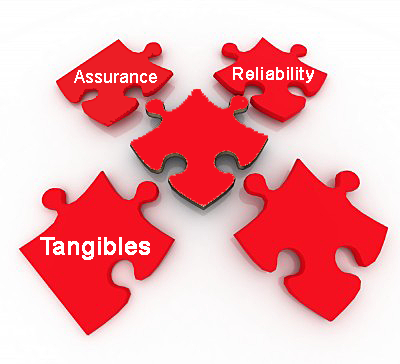 In my previous blog in this series, we discussed how to transform the service experience through ‘assurance’. In this blog post, we will consider what we can do to transform the service experience through the tangible aspects of the service we provide. Our customers will make judgments about the quality of our work and the competence of our technicians based on tangible clues that they can see.
In my previous blog in this series, we discussed how to transform the service experience through ‘assurance’. In this blog post, we will consider what we can do to transform the service experience through the tangible aspects of the service we provide. Our customers will make judgments about the quality of our work and the competence of our technicians based on tangible clues that they can see.
Recall that the name RATER[1] is an acronym with each letter representing the first letter of one of the five key dimensions of service quality. They are:
R eliability: Our ability to provide what is promised, dependably and accurately
A ssurance: Our knowledge and courtesy, and our ability to convey trust and confidence
T angibles: Our physical facilities and equipment, and our appearance
E mpathy: The degree of caring and individual attention we provide to customers
R esponsiveness: Our willingness to help customers and provide prompt service
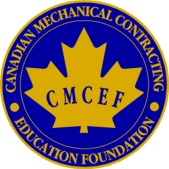 The next and final webinar in the CMCEF Webinar Series is called Maintaining the Service Experience and will take place on Tuesday, February 26th, 2013. On February 12th, 2013, I presented the second webinar in the Transforming the Service Experience series hosted by the Canadian Mechanical Contractors Education Foundation. The Webinar was called Creating the Service Experience. In the webinar, we considered the five key hurdles to successfully engaging our technicians in activities to transform the service experience resulting in more revenues and higher customer satisfaction and retention. The hurdles that can prevent our technicians from doing what we would like them to do are:
The next and final webinar in the CMCEF Webinar Series is called Maintaining the Service Experience and will take place on Tuesday, February 26th, 2013. On February 12th, 2013, I presented the second webinar in the Transforming the Service Experience series hosted by the Canadian Mechanical Contractors Education Foundation. The Webinar was called Creating the Service Experience. In the webinar, we considered the five key hurdles to successfully engaging our technicians in activities to transform the service experience resulting in more revenues and higher customer satisfaction and retention. The hurdles that can prevent our technicians from doing what we would like them to do are:
- Knowledge: We must clearly define our expectations of what we want our technicians to do. Often we assume that our technicians know what is expected and overlook the importance of this step.
- Skills: We must ensure that our technicians have the skills to act in the manner we ask of them. Engaging in proactive discussions with customers may be uncomfortable for some of our technicians and they may lack the skills to do so effectively.
- Perception: We must ensure that our technicians understand why we ask them to act as we do. Speaking to customers about our services and capabilities may be perceived as a sales task by our technicians. They need to understand that helping our customers operate their facilities more effectively is a service, not a sale.
- Tools and processes: We must make certain that the technicians have the tools and are supported by our processes to do what we want them to. When our processes do not support our technician’s efforts, they will perceive that what we are asking is not that important and quickly lose heart.
- Motivation: To get our technicians to enthusiastically embrace a proactive service approach, they must want to do it. Otherwise, at best they will simply go through the motions or, at worst, not act in the manner we would like them to at all.
 In the last blog post, we discussed transforming the service experience through reliability. Let us now consider what we can do to transform the service experience by creating the feeling of assurance in our customer’s mind. That is, helping them, as they reflect on our service, say to themselves “That’s why I do business with you!”
In the last blog post, we discussed transforming the service experience through reliability. Let us now consider what we can do to transform the service experience by creating the feeling of assurance in our customer’s mind. That is, helping them, as they reflect on our service, say to themselves “That’s why I do business with you!”
As we know, the name RATER[1] is an acronym with each letter representing the first letter of one of the five key dimensions of service quality. They are:
Reliability: Our ability to provide what is promised, dependably and accurately
Assurance: Our knowledge and courtesy, and our ability to convey trust and confidence
Tangibles: Our physical facilities and equipment, and our appearance
Empathy: The degree of caring and individual attention we provide to customers
Responsiveness: Our willingness to help customers and provide prompt service
To help our customers experience each of these dimensions when working with us, we need to ensure that our employees act in ways that allow our customers to experience these dimensions. Today we will look at creating Assurance for the customer.
 In a previous blog post, Transforming the Service Experience – 5 Dimensions of Service Quality, we introduced the RATER Model[1] of customer service as a tool to help us transform the service experience into one that is valued by our customers and creates a sustainable competitive advantage. The model represents the five key dimensions of service quality and provides service providers with a template for defining and creating their unique and valued service experience. Today we will consider how a service company can define the dimension “Reliability”.
In a previous blog post, Transforming the Service Experience – 5 Dimensions of Service Quality, we introduced the RATER Model[1] of customer service as a tool to help us transform the service experience into one that is valued by our customers and creates a sustainable competitive advantage. The model represents the five key dimensions of service quality and provides service providers with a template for defining and creating their unique and valued service experience. Today we will consider how a service company can define the dimension “Reliability”.
As you may recall, the name RATER is an acronym with each letter representing the first letter of one of the five dimensions. They are:
R eliability: Our ability to provide what is promised, dependably and accurately,
A ssurance: Our knowledge and courtesy, and our ability to convey trust and confidence,
T angibles: Our physical facilities and equipment, and our appearance,
E mpathy: The degree of caring and individual attention we provide to customers,
R esponsiveness: Our willingness to help customers and provide prompt service.
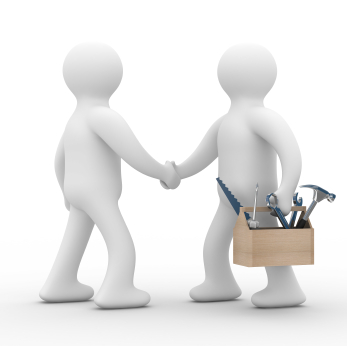 Do you want to increase Revenues Generated by your Techs? Tell them to Stop Selling (and Start Serving)!
Do you want to increase Revenues Generated by your Techs? Tell them to Stop Selling (and Start Serving)!
Our field service technicians represent a huge opportunity to generate revenues. They have a special relationship with our customers based on a high level of trust. Through that relationship, they have gained a unique understanding of our customers’ goals. They have a practical understanding of the latest in technology and they know our company’s capabilities. Who better than them to recognize and explore opportunities for your company to add more value through more services?
Despite this truth, we have found that most service firms are not fully capitalizing on the unique relationships that their service people have. This is unfortunate for both the service firm and the customer. When we do not fully leverage the special relationships that our service technicians have, we are missing a tremendous opportunity to grow our business, reduce competition and increase customer satisfaction levels. But there is more to it than that. The customer is being denied the opportunity to run their plant or facility better. The customer is not benefiting fully from the knowledge and expertise of our service technicians.
 Imagine opening up a reputable trade magazine and reading an article that states that you should stop maintaining your mechanical and electrical equipment. You read the following:
Imagine opening up a reputable trade magazine and reading an article that states that you should stop maintaining your mechanical and electrical equipment. You read the following:
Engineers have just discovered that maintenance of mechanical and electrical equipment is not needed to keep equipment running at peak performance. “You’ll get better performance by ignoring the equipment altogether. The equipment will run better and you will save money on not having to pay those service bills!” This is great news for building owners and process managers. They can now take a hands-off approach and while getting excellent performance from their equipment.



